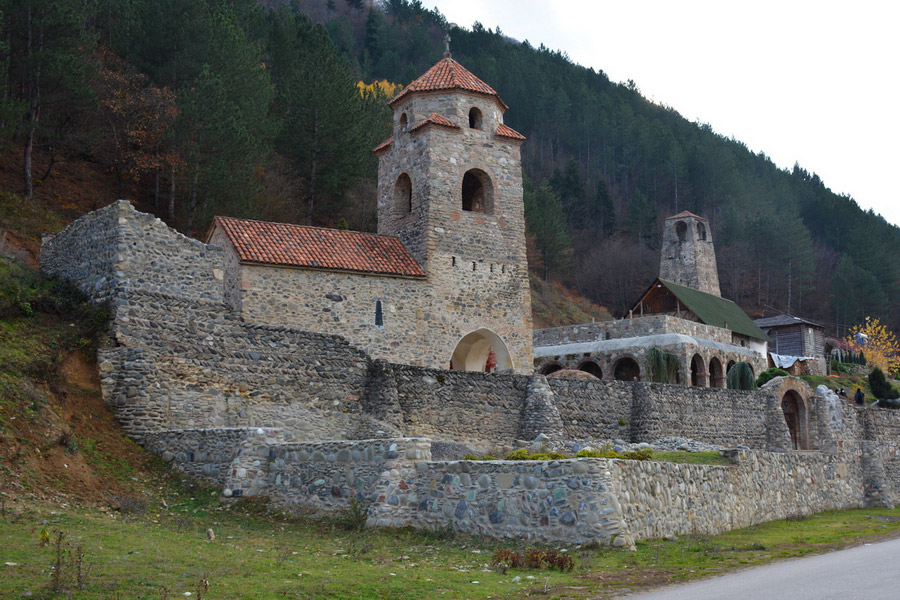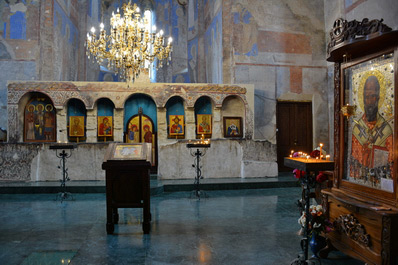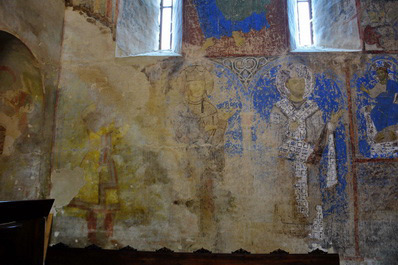Kintsvisi Monastery, Georgia

The Kintsvisi Monastery, a medieval men's monastery situated in the vicinity of Gori, annually draws thousands of pilgrims from throughout Georgia. Founded in the 12th-13th centuries, it stands as a unique example of temple architecture from the Golden Age—a period marked by the reign of King David IV the Builder and his daughter, Queen Tamar. Visitors to this serene and luminous place come not only to pray but also to behold ancient wall paintings. The monastery's majestic, austere, and ascetic ambiance inspires contemplative thoughts about the eternal, unrelenting flow of time and the inevitable change of eras.
Named after St. Nicholas the Wonderworker, the Kintsvisi Monastery is located in the picturesque Dzama river gorge, seven kilometers from the small town of Kareli. The monastery frequently hosts school and tourist excursions, and during religious holidays, pilgrims from various corners of Georgia visit Kintsvisi. The monastery's name is linked to the Georgian expression "kinul tsuravs," meaning "sliding on ice," possibly referring to the harsh weather conditions characteristic of the Dzama gorge. Situated in the mountains at an altitude of about 1050 meters above sea level, it is quite cold here in autumn, winter, and early spring.
The monastic complex comprises three churches and a small bell tower, adjoined by a medieval wall. Unlike Georgian temples of that era, which were constructed from cut stone, this monastery is built from bricks.
The oldest church in the complex, dedicated to the Holy Virgin, was built in the 10th century and has remarkably well-preserved over a millennium. Inside, visitors can see a fresco depicting the Virgin Mary with the infant Jesus in her arms ("Oranta on the throne").
The largest temple of the monastery—the church of St. Nicholas the Wonderworker, built in the early 13th century—contains the greatest number of frescoes, eagerly sought after by aficionados of Georgian history. Among the most famous is an image of an angel from the scene "The Myrrh-bearing Women at the Tomb." This angel, dressed in blue garments with a green cloak, appeared to the women who came to the empty tomb after Christ's resurrection. Interestingly, the angel's attire resembles that seen on an angel to the right in the famous icon "The Trinity" by Andrei Rublev. Also, within the walls of St. Nicholas' church, one can find images of Queen Tamar, King George III, King George IV Lasha, and bishops, with many frescoes dating back to 1205-1206.
Nearby is the Church of St. George the Victorious, built in the 15th century, illuminated by two windows on the south and west. Above the western window, a relief cross can be observed.
Kintsvisi is a men's monastery where monks live and conduct services on a permanent basis. While exploring the monastery, visitors can also see utility buildings, a wood storage, and a small shop offering candles, icons, and handcrafted items.
If you're visiting Kintsvisi, it's also worthwhile to explore the nearby Ortubani women's monastery.


